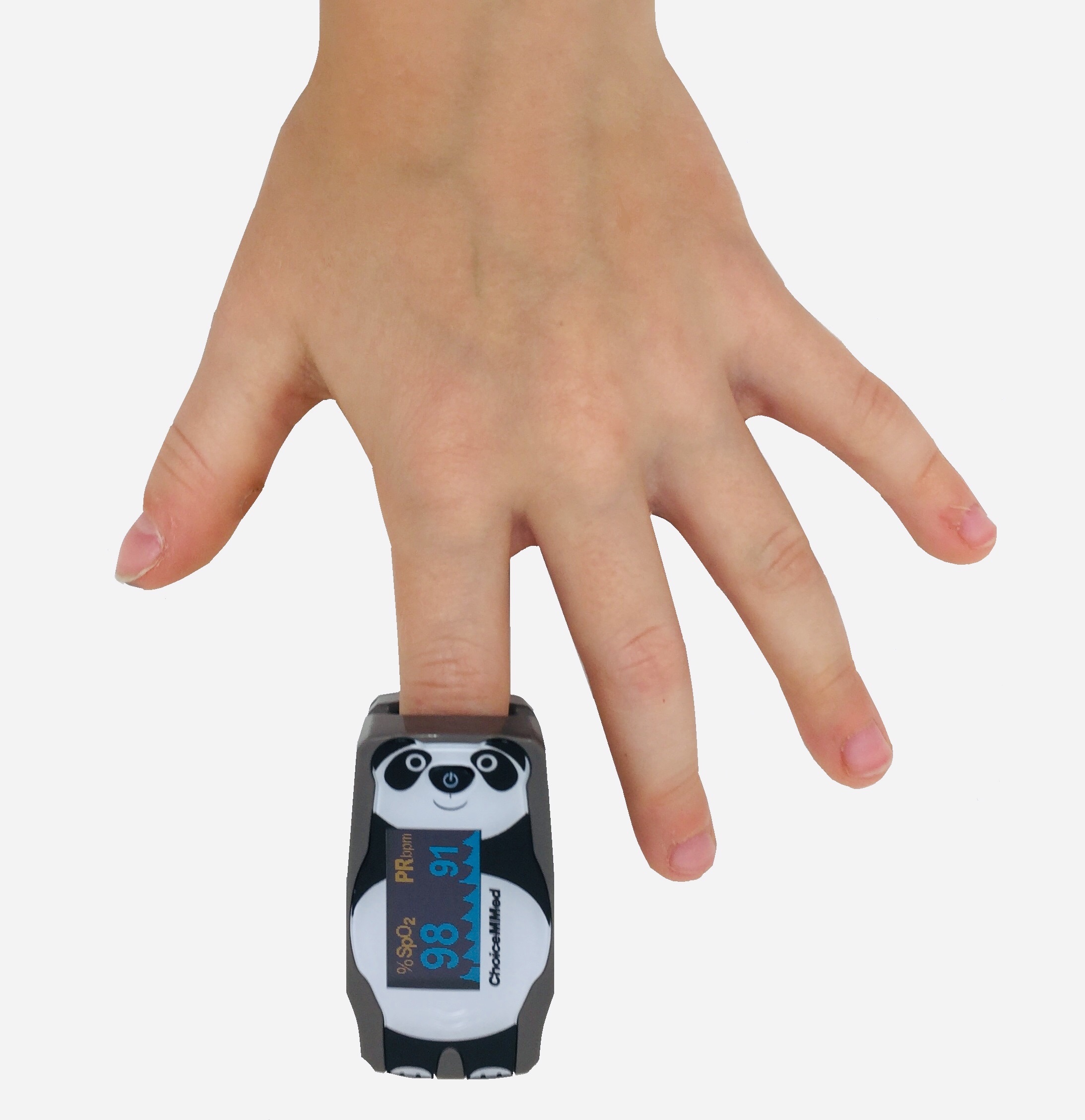Unlike the other monitors included in our assistance programme, the Fingertip Pulse Oximeter is not an alarm, but it is useful for monitoring a child or adult with Dravet Syndrome during a seizure and when out and about.

Information about the Fingertip Pulse Oximeter provided by the manufacturers:
The Fingertip Pulse Oximeter is a small, portable, battery-operated device that slips on a finger and measures the oxygen saturation levels in the blood, pulse rate and pulse intensity. Results are shown on an easy-to-read display.
Fingertip oximeters are comfortable to wear and fit a wide range of finger sizes. The Oxywatches come in two sizes – one for children aged 2-8 and a larger version for children aged 8 and over. The models we can provide are the Paediatiric MD300 C52 Waveform Fingertip Pulse Oximeter. These are available as a Yellow Teddy, a Green Frog or a Black & White Panda. This is a lightweight and compact “all-in-one” device, which offers the same features of many other fingertip pulse oximeters but in a smaller unit, designed specifically to fit child-sized fingers. The larger 8 years and over is model MD300 C63 Fingertip Waveform Pulse Oximeter and is available in black, as shown here.
Feedback from families on using the Fingertip Pulse Oximeter:
Families have reported that they find this mini device very useful to carry in a bag when out and about, or to use at home if they don’t have the larger Pulse Oximeter Machine. The oxygen, pulse and heart rate readings not only help parents/carers monitor the severity of seizures but also provide really useful data to pass onto paramedics if emergency care is needed. Popping the mini device on a person’s finger can be a handy way to check whether or not they are having a seizure.
Important: the Fingertip Pulse Oximeter Machine and other monitoring equipment provided by DSUK is in an assistive capacity only. The intention of provision is to assist in the management of an individual, and their condition and symptoms, to help minimise risk. Monitoring devices are assistive only and must not be used in substitute for observing clinical signs. DSUK can accept no liability for the accuracy of monitoring equipment nor for any consequences resulting from reliance on the device, or the actions of a patient, carer, medical practitioner or other individual resulting from use of the monitoring device.
